Samsung Galaxy Nexus & Ice Cream Sandwich Review
by Brian Klug & Anand Lal Shimpi on January 18, 2012 1:34 PM ESTSettings
Android continues to offer configuration options within individual applications as well as centrally located system settings. Once again the lack of a dedicated, system-wide menu button forced Google to rely on a settings icon alone to get you to the system settings panel.
Although most of the configurable options remain unchanged from Gingerbread to Ice Cream Sandwich, Google completely reorganized the Android system settings page. What used to be a convoluted mess of items that weren't always placed logically has now turned into something far more sensible:
| Gingerbread vs. Ice Cream Sandwich | ||||
| Gingerbread | Ice Cream Sandwich | |||
| Settings |
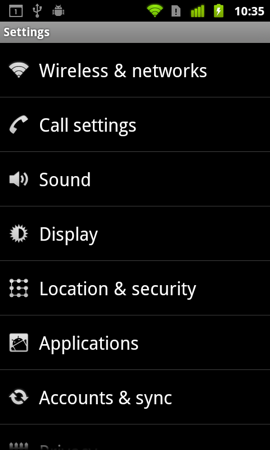 |
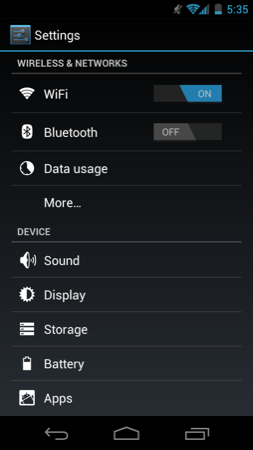 |
||
Location settings are now separate from security and there's now a dedicated backup & erase section. Subtle changes like these seem to make a lot more sense than the organization in Gingerbread. I find myself spending far less time staring blankly at the ICS settings menus than I did in Gingerbread. Let's hope Google's partners don't go in and shift things around too much.
ICS includes a complete set of cool developer options, above and beyond the ability to enable USB debugging. You can force GPU accelerated drawing system-wide, even in apps that don't explicitly request it. You can overlay CPU usage data on the screen, cause any part of the screen that has been redrawn to flash wildly and even mark up the screen with your last touch events:
Most of this isn't useful to an end user but for a developer or just someone who's curious, it's fun stuff. More generally applicable however is the ability to turn on a little circle that follows your finger around the touch screen similar to what's always used in touchscreen demo videos.

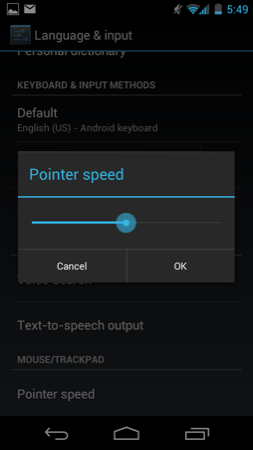
There's also official support for adjusting mouse pointer speed, an obvious inclusion for dockable tablets like the Transformer Prime.
Copying via MTP or PTP
With Honeycomb we saw Google treat tablets as Media Transfer Protocol (MTP) devices rather than traditional USB mass storage devices. For Windows users there was no difference as MTP is natively supported in Vista and 7. Mac users have to rely on third party support for MTP, which Google provided via its own free Android File Transfer application.
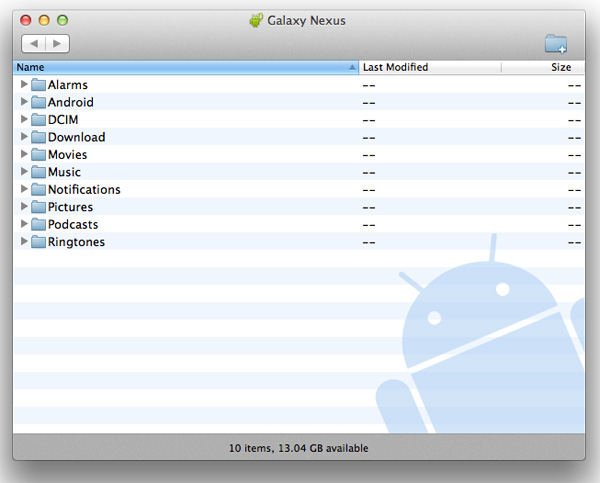
Given that Android exposes much of the file system to the end user, MTP is a safer bet for protecting against corruption from both Android and the connected Mac/PC modifying data on the NAND at the same time.
Business is as usual for Windows users as ICS based devices just appear as a drive letter thanks to native MTP support. If you want to access an ICS device as you would a camera (perhaps for a specific application), Google allows you to toggle between MTP and PTP (Picture Transfer Protocol).


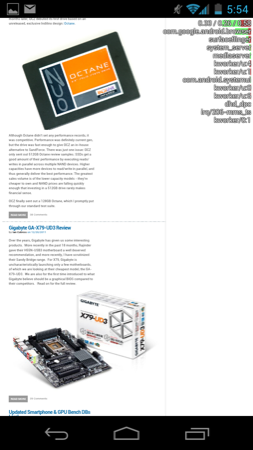
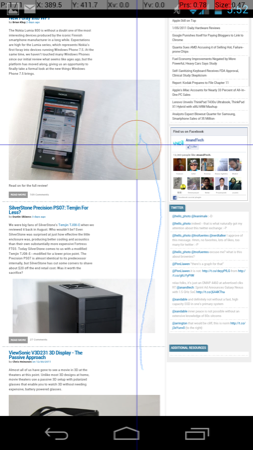
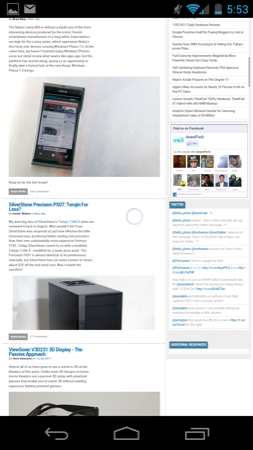








185 Comments
View All Comments
thecraw - Saturday, January 21, 2012 - link
couldn't stop laughing at that statement, sure no one is forcing you to use itunes, its your own problem if you want to backup your iproduct or upgrade your iOS etc.. yes no one is forcing you right...steven75 - Friday, February 10, 2012 - link
Have you never heard of iCloud? I mean are we in bizarro world here or is everyone really THAT clues on iOS 5?augustofretes - Monday, January 23, 2012 - link
I found comments like yours absolutely hilarious, because I don't own an iPhone, nor I'm interested on buying one, I'm perfectly happy with my Samsung Galaxy S II running CM9 ;-)You're not being objective, unless, of course, you only see your homescreen and never open any application.
The iPhone 4S is not perfect, I completely agree, but the interface is more fluid, this is fact, pinch-to-zoom is not a smooth, even on a GNex, as it on the 4S, but it's pretty smooth now.
Sorry mindless fanboy.
kebab77 - Sunday, February 5, 2012 - link
Serious performance boost for phones currently on Android 2.3.x:http://www.bestsmartphone.com/2012/02/05/android-4...
... Samsung Galaxy S2 still top of the pile!
macs - Wednesday, January 18, 2012 - link
My only suggestion is that there are some device that need a sort of priority for a review. Galaxy Nexus and ICS should be on this list like the Apple products (you already do that) and maybe a flagship WP 7 device like Lumia 800/900.We can wait a bit more for device like Razr, Lumia 710, various HTC, various Samsung,...
In 1 H 2012 my priority list will be Galaxy S 3, first device with Krait and Ipad 3.
Back at reading, I know this will be a good read!
Thank you
roedtogsvart - Wednesday, January 18, 2012 - link
Anand, just thought I'd throw this in there:For something like $25 (Verizon) you can buy an extended battery and gain an additional 250 mAh (1850 vs 2100) that adds basically no perceptible thickness to the device, though I did not precisely measure. Have you tested with the extended battery? I feel like it makes an already amazing phone even better.
Brian Klug - Thursday, January 19, 2012 - link
I managed to snag an extended battery for the RAZR review, but didn't get the chance to do the same with the CDMA/LTE Galaxy Nexus. I've seen that battery however, and it is a novel design - the back doesn't get thicker, just flatter (the whole phone is as thick as the bulge).We've seen pretty linear scalings before, so you can assume that extra 250 mAh will scale linearly as well.
-Brian
3DoubleD - Wednesday, January 18, 2012 - link
The task switcher is blazing fast on the Transformer Prime, so I'd say it's a Galaxy Nexus limitation and not an ICS limitation.Lucian Armasu - Thursday, January 19, 2012 - link
Anand didn't say it's an ICS issue either. He said it's a GPU issue, because older GPU's still can't handle HD resolutions very well, just like Tegra 2 GPU barely could, too.But I'm sure on lower-end ICS phones with lower resolutions, it should work faster, so it's not like every ICS phone will need a Tegra 3 GPU-level from now on.
GnillGnoll - Thursday, January 19, 2012 - link
He said it _could_ be a GPU issue. Something which I strongly doubt, it's not like the task switcher adds that much graphics load over rendering the normal UI.